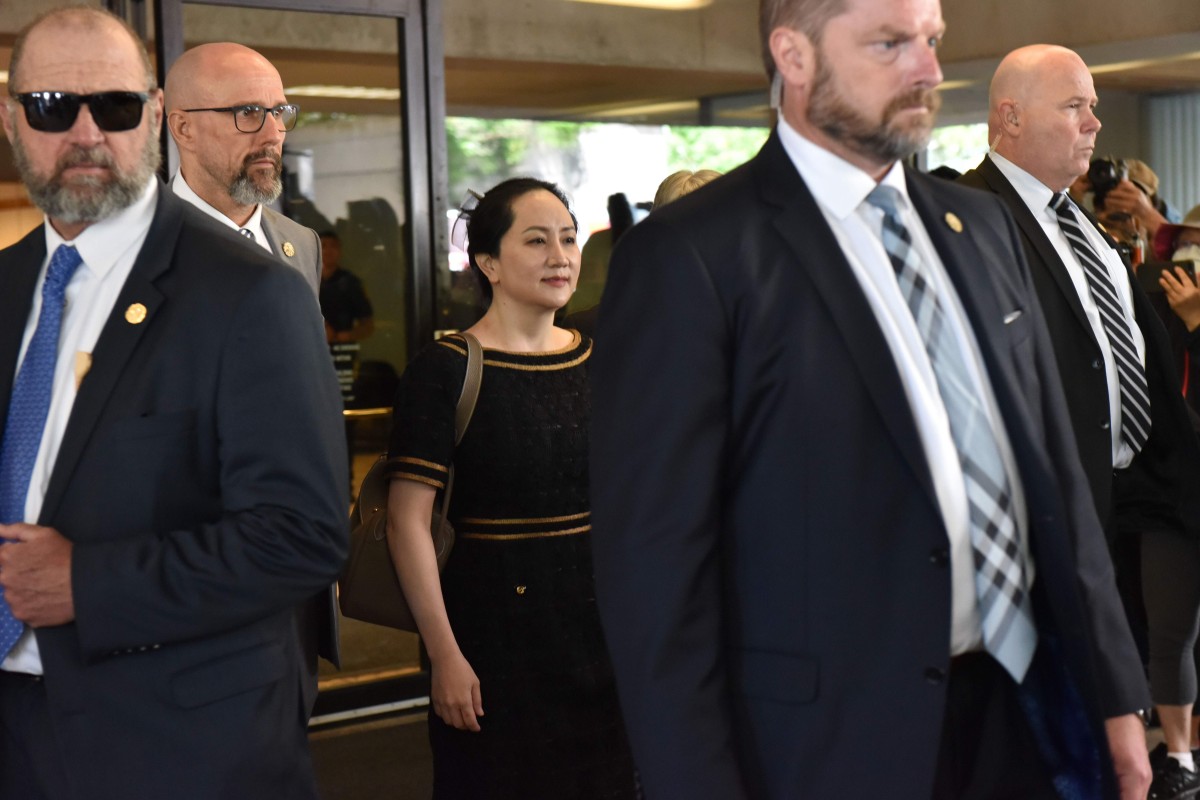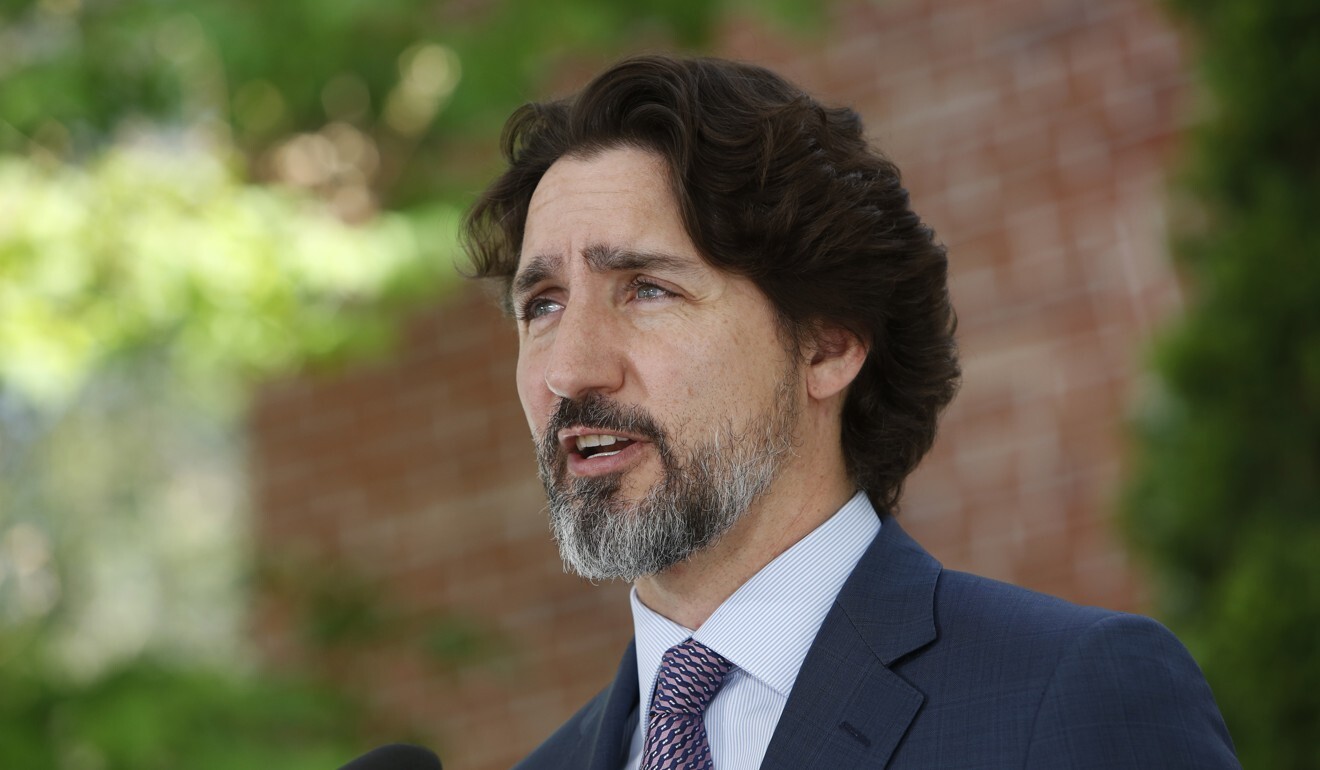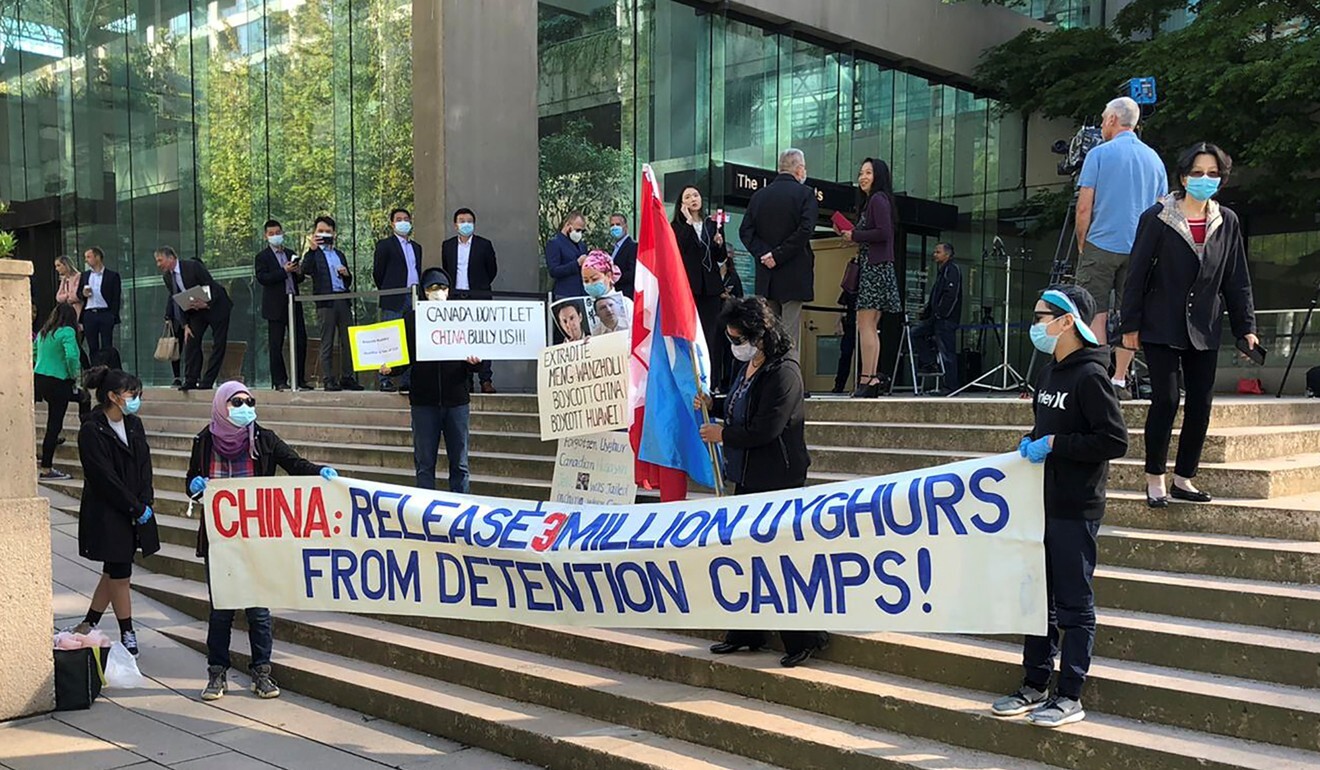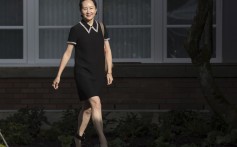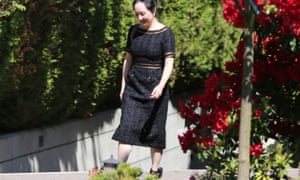‘They want their civil war’: Far-right ‘boogaloo’ militants have embedded themselves in the George Floyd protests in Minneapolis
May 28, 2020 By Jordan Green, Special to Raw Story

Young, white men dressed in Hawaiian-style print shirts and body armor, and carrying high-powered rifles have been a notable feature at state capitols, lending an edgy and even sometimes insurrectionary tone to gatherings of conservatives angered by restrictions on businesses and church gatherings during the coronavirus pandemic.
Just as many states are reopening their economies — and taking the wind out of the conservative protests — the boogaloo movement found a new galvanizing cause: the protests in Minneapolis against the police killing of George Floyd.
A new iteration of the militia movement, boogaloo was born out of internet forums for gun enthusiasts that repurposed the 1984 movie Breakin’ 2: Electric Boogaloo as a code for a second civil war, and then modified it into phrases like “big luau” to create an insular community for those in on the joke, with Hawaiian-style shirts functioning as an in-real-life identifier. Boogaloo gained currency as an internet meme over the summer of 2019, when it was adopted by white supremacists in the accelerationist tendency. In January, the movement made the leap from the internet to the streets when a group boogaloo-ers showed up at the Second Amendment rally in Richmond, Va.
It’s not just the jittery aesthetics and pop-culture irony that sets boogaloo apart from an older generation of militia activists, but also its unbridled hostility towards law enforcement. In late 2019, the movement spread beyond private Discord servers to multiple Facebook groups with names like Thicc Boog Line, Boojahideen of Occupied Appalachistan and, in North Carolina, Blue Igloo. Some of the memes generated and shared on the Facebook pages contain overt signals towards white nationalists, including images of the German Wehrmacht during World War II and references to the failed war to preserve white rule in Rhodesia during the 1970s. But others signal an interest in building bridges with the political left by lifting up the names of black victims of police violence like Oscar Grant, Eric Garner and Breonna Taylor, alongside right-wing martyrs like LaVoy Finicum, Sammy Weaver and Duncan Lemp, the latter a boogaloo-er who was killed by police in March during a no-knock raid at his home in Maryland.
When protests against the police killing of George Floyd escalated into clashes between police and protesters on Tuesday night, a significant segment of the boogaloo movement was electrified.
At 8:38 p.m., an anonymous Discord user identified as [MN-TC] Jimmydean338 posted in the #SOS channel for the private Citizens Liberty Organization server. The post displayed a red button inscribed with the words, “Send help!” followed by the address 3000 Minnehaha Ave., which is the location of the Minneapolis Police 3rd Precinct. “Police opening fire on protesters breaching precinc [sic],” Jimmydean338 wrote. “Not a drill.”
At about 11:30, the Big Igloo Bois Facebook group posted a photo of a young man holding the trademark boogaloo flag depicting an igloo and palm tree in the protests.
“If there was ever a time for bois to stand in solidarity with all free men and women in this country, it is now,” the admin for the page wrote. “This is not a race issue. For far too long we have allowed them to murder us in our homes, and in the streets. We need to stand with the people of Minneapolis. We need to support them in this protest against a system that allows police brutality to go unchecked.”
Benjamin Ryan Teeter, a resident of the coastal community of Hampstead in southeastern North Carolina, reshared the red button panel posted by Jimmydean338 on his Facebook page at 11:44 p.m., writing, “Lock and load boys. Boog flags are in the air, and the national network is going off.”
Teeter, who is active in the North Carolina Libertarian Party and has participated in weekly armed excursions through downtown Raleigh with a group organized through the Blue Igloo Facebook group over the four weeks alerted his friends that he would be driving, not flying to Minneapolis.
Tom Bailey, a Libertarian candidate for Congress in 2018, commented, “Grim.” To which Teeter replied, “Exactly! I love it!”
Another private Discord server set up for boogaloo users — named “We should all Led(better)” — had designated special channels for different functions: #on-scene-only (for users on the ground), #off-scene-intel (for remote users sharing information), and #location-want-to-repond (for users across the country to coordinate travel to Minneapolis).
Boogaloo activists who showed up for the first night of protests on Tuesday met with mixed reaction.
One, a white man identified on Facebook as Michael Solomon, posted photographs of himself and another friend holding high-powered rifles while posing alongside black protesters, including one wearing a Black Lives Matter hoodie. But another, Tyler Scott of Minnesota man, warned in the Big Igloo Bois thread: “This is not the time for boog, this is how a race war starts.” He added that the protesters “jumped one of our 3%ers” — a term that denotes an older generation of militia activists — “earlier tonight and stole a firearm. They are not with us. They’ve made it clear they don’t want us.” Scott’s statements were met with skepticism, with other commenters suggesting he was making it up or speculating that the older militia activists were racist and had it coming.
“I think for a lot of boogaloo-ers, their primary interest is resisting the state, what they believe to be state tyranny,” said Alex Friedfeld, an investigative researcher at the ADL Center on Extremism in Chicago. “They have this hostility towards law enforcement…. They oppose these [pandemic] directives. They’re upset about no-knock raids, police brutality. The George Floyd case — this is an example of police brutality, this willingness of the state to execute those who disobey — so it’s not surprising that they showed up to protest.”
The nascent boogaloo movement is not monolithic, Friedfeld said, and it draws from spectrum of groups from the right wing to the far right, from militias and anarcho-capitalists to white supremacists. An internal struggle is underway to define the movement’s relationship with race, he said.
“You see this in the Facebook comments,” Friedfeld said. “You’ll see very strong condemnations of racism and homophobia. Then there are people who use racially charged phrases such as, ‘Vote from the rooftops.’ It’s a reference to Korean shop-owners who went to rooftops to fire on looters [during the 1992 Los Angeles riots], who are presumed to be black. There’s this debate: Why are we accepting Black Lives Matter when they won’t accept us? There’s a good deal of social distrust.”
Antifascist Twitter accounts on Wednesday issued a steady stream of stern warnings against making common cause with boogaloo.
“It’s a right-wing thing; it’s a neo-fascist thing,” said Daryle Lamont Jenkins, a veteran antifascist organizer based in New Jersey, in a Twitter video. “And they’re trying to use what’s happening in Minneapolis as a jump-off. Do not let them. They are not our friends.”
Jenkins told Raw Story that he fears that boogaloo-ers are bringing their apocalyptic fantasies about civil war to Minneapolis and will leave residents to pick up the pieces.
“They can be more aggressive, and they can cause the police to be more aggressive,” he said. “They can get people hurt because they want their civil war…. People who are in the community, all they know is they have to defend themselves. The people they hate get hurt, and they walk away scot-free. So, it’s kind of a win-win for them.
“You don’t even necessarily have to be interacting with anybody in order to pop something off,” he added. “You’re going to be one with the crowd.”
Jenkins noted that Minneapolis has rocky track record with armed white men interposing themselves in protests against police brutality: In 2015, five people at a Black Lives Matter protest were shot, resulting in non-life-threatening injuries. A white man from Bloomington named Allen Scarsella was later convicted in the shootings.
Jenkins charges that the boogaloo-ers are operating in bad faith, citing a fellow New Jersey resident named Paul Miller who was recently involved in a Memorial Day reopen protest. Miller identifies himself as a “Boogaloo Boy” on his Instagram account, which also includes the Latin Catholic motto “Deus vult,” or “God wills [it],” generally associated with Islamophobia.
On Wednesday, Miller re-shared livestreams from Minneapolis on his Instagram, while refraining from providing his views on the action underway. A previous post includes a whimsical video of armed protesters during an April 30 reopen protest at the Michigan state capitol captioned, “When the boogaloo kicks off cuz the boys had enough.”
Others more definitively signal that Miller’s politics don’t align with the protesters in Minneapolis. One calls for the release of the white father and son who are charged with murdering Ahmaud Arbery, a black jogger in Georgia, while another contends that the media is burying coverage of migrants “rioting throughout France.” Miller frequently uses boogaloo hashtags with Instagram posts, including #bigluau, #boogaloomemes, #boogaloo2020, #Boogvirus, #boogaloosidequest and #boogaloobois.
“There’s two versions of boogaloo,” said Friedfeld of the ADL. “There’s the white supremacist burn society down and build a white ethno-stage. And then there’s the anti-government resist tyranny at all costs, and if it creates a civil war, so be it version.”
So far, the wing of the boogaloo movement that’s shown up in the streets is the more mainstream, outwardly inclusive version.
But some white supremacists, especially in the accelerationist tendency, are likely cheering events in Minneapolis from the sidelines, or looking for ways to melt into the crowd.
A user identified as “Terrorwave Refine” messaged at 11:59 p.m. on Tuesday: “Boogaloo boys are reportedly on [sic] place. If someone really wanted to kick off the boogaloo, now would be a fine time to fire some shots and frame the crowd around you as responsible.”
Earlier in the evening, a user named “The Shitpost Facility (Dick)” wrote, “I hate that I support the n****** over the pigs at this point, get some you dumb monkey f****ot. This is absolutely the end goal of our philosemitic society. Imagine giving n****** ‘civil rights’ hahahha.”
Another, named “Uncle Paul,” forwarded Dick’s message, adding, “I don’t support either the n****** or the pigs… certainly not the k****. However, I’ll do some pushups and pull-ups while I watch them redacting each other.”
Benjamin Ryan Teeter, the North Carolina man traveling to Minneapolis, said he is motivated to join the protests out of genuine solidarity with black residents who are oppressed by police violence. Teeter, who describes himself as an “LGBT left-leaning anarchist,” said he plans to “defend the protesters.”
He deflected when asked if he and other boogaloo-ers are consulting with local residents to see how they can best support them, as opposed to pursuing their own agenda.
“I think trying to get the police to stop killing people is trying to support the people of the community,” he said. “If we’re not willing to stand up because we might hurt someone, how bad are we going to allow things to get?”
Teeter insisted the share of white supremacists in the boogaloo movement is no greater than any other group or political party. But he pleaded ignorance when asked about Dillon Goad, a North Carolinian who attended the first Raleigh boogaloo walk on May 1 wearing a Hawaiian-style shirt. In addition to his primary Facebook page, Goad has an alt page under his name that pays tribute to Hans Friedrich, a member of the SS Infantry Brigade accused of murdering Jews and communists in the Soviet Union.
Teeter posted a breathless update at 1:23 a.m. on Wednesday.
“Baltimore cop shot,” Teeter wrote. “Chicago is a powderkeg. MN police are planning an emergency exit if the building is breached.”
Goad was the first to comment: “It’s all coming together.”
Reached on the road nine hours outside of Minneapolis on Wednesday evening, Teeter demurred when asked about Goad.
“Dillon is someone I’m not familiar with,” he said. “I don’t want to speak to the account without knowing. I don’t know if it’s a satire account or something else.”
Whether their movement is infiltrated with neo-Nazis or not, there’s little doubt that the boogaloo-ers want to see an escalation in Minneapolis.
In a post that has now been removed from the We should all be Led(better) server, (KS) RugbyIsLife lamented at 11:38 p.m. on Wednesday: “Looks like it’s just a bunch of looting that should have been booging. Are people going to wake the fuck up and start laying down lead or just steal TVs and shit?”










